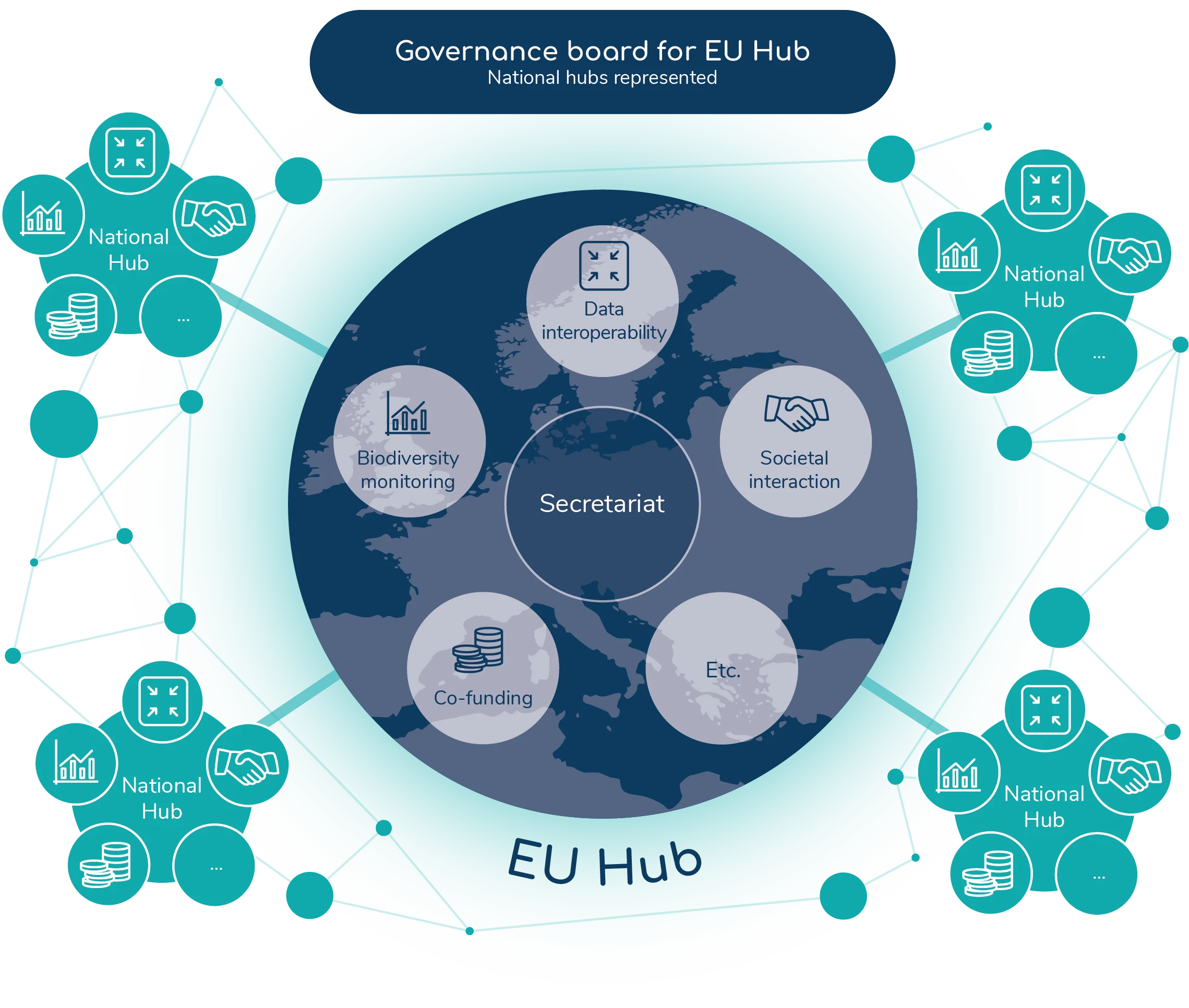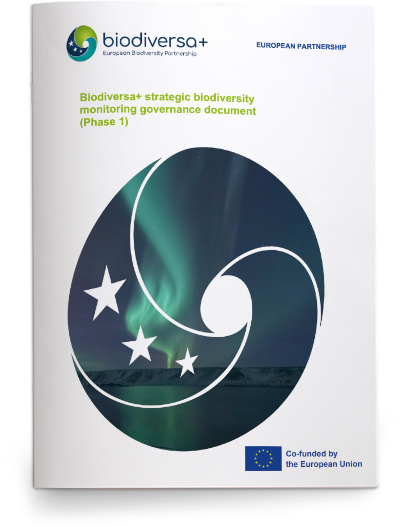“Biodiversa+ strategic biodiversity monitoring governance document (Phase 1)”
Europe’s biodiversity monitoring landscape is currently fragmented and inconsistent, marked by significant spatial, temporal, and taxonomic gaps, as well as varying methodologies across countries. There is a pressing need to renovate, partially establish, and comprehensively harmonise transnational monitoring schemes. This would ensure data comparability, interoperability, and usability to better tackle biodiversity loss.
This report offers a foundational overview of the current landscape. Based on questionnaires, interviews, and workshops with Biodiversa+ partners and stakeholders, the report highlights major governance challenges and outlines potential pathways forward.
Some takeaways
- Fragmented coordination: National monitoring schemes often operate in isolation. A flexible, multi-level governance model is proposed, combining national/sub-national coordination hubs with a central European entity. This model would foster greater alignment across scales through continuous dialogue and cooperation.
- Inconsistent data and protocols: Diverse monitoring methods hinder data harmonisation. The use of Essential Biodiversity Variables (EBVs) is recommended as a standardised framework to bridge raw data and policy indicators. However, EBVs remain underutilised by many environmental authorities. Harmonisation efforts must align with existing national practices to avoid redundancy and preserve data continuity.
- Resource gaps: Long-term monitoring is undermined by unstable, project-based funding. Budget levels vary greatly between countries and years. While EU programmes like LIFE provide essential support, a broader, sustainable funding model is urgently needed. Cost disparities between marine (infrastructure-heavy) and terrestrial (often volunteer-based) monitoring must also be accounted for.
- Data interoperability: Ensuring interoperability—across technical, semantic, organisational, and legal domains—is critical. National data portals are not yet widespread, and integration with global platforms like GBIF (Global Biodiversity Information Facility) is still limited. GBIF nodes could help standardise and publish data, although they are often disconnected from national reporting systems.
- Toward a transnational monitoring system: EuropaBON has identified nearly 1,000 relevant biodiversity databases and monitoring initiatives in Europe. Many are run independently and rely heavily on volunteer networks, lacking overarching coordination. Nonetheless, successful examples like the European Bird Census Council and European Butterfly Monitoring Scheme demonstrate the feasibility of broader coordination. The Biodiversity Monitoring Coordination Centre (BMCC), currently being designed by EuropaBON, would provide technical and legal guidance, governance models, and a financing strategy for EU-wide coordination. The European Environment Agency (EEA) and GBIF are key partners in this effort. The envisioned model is a networked system: national/sub-national hubs linked to a central European hub (BMCC), with shared governance and aligned data infrastructures.
National hubs can be flexible platforms or coordinating organisations responsible for biodiversity and ecosystem assessments, as well as the implementation of international environmental policies and agreements. These hubs may handle functions such as networking, funding, steering, coordinating biodiversity monitoring, and managing data. They can also create synergies among national Eionet members, GBIF nodes, and national biodiversity observation networks (BONs).
The report recommends continuing efforts to harmonise monitoring protocols, pilot the application of the EBV framework, and develop interoperable data infrastructures that can support integration at both national and European levels. It also emphasises the importance of improving data flow and collaboration with the private sector, as well as gaining a clearer understanding of the costs associated with national biodiversity monitoring efforts.
Biodiversa+ will further support the development of national biodiversity monitoring centres in alignment with the design of the BMCC, working closely with EuropaBON.

